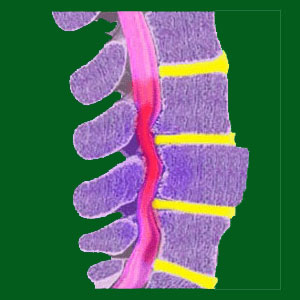
Spondylolisthesis in children can be a concerning occurrence for parents, especially when the child complains of back pain due to their condition. Any health issue can prevent a normal childhood and force kids to grow up much faster than nature intended. Worse still, the consequences on the psychoemotional development of young people who are affected by the nocebo effect of spondylolisthesis can set the ideal stage for a lifetime of suffering.
Spondylolisthesis can be a congenital condition or may be developed in early childhood. Listhesis is easily diagnosed using various types of imaging study and is often found in children when performing medical tests for completely unrelated health conditions.
This important discussion focuses on the occurrence of spondylolisthesis in children. We will examine the how listhesis can affect young people and provide guidance for parents who must manage a child’s health that already seems compromised at such a tender age.
Diagnosis of Spondylolisthesis in Children
Some listhesis is a congenital condition and may exist before birth. Even when listhesis is not present, the leading direct cause of listhesis, spondylosis, often is. These conditions are sometimes discovered in pre-birth imaging studies during prenatal exams.
In other cases, spondylolisthesis may be diagnosed after birth, at any age from infancy up to adulthood when the person seeks medical imaging for an unrelated condition that just happens to also visualize the affected area of the spine. This is the most common way that asymptomatic listhesis is discovered.
If the child has back pain, then they will likely be diagnosed during evaluation of their symptoms. The question remains whether listhesis is the actual source of their pain, a partial contributor or a complete non-factor, since it can and does play all 3 roles often.
Painful Spondylolisthesis in Kids
Children who have back pain require careful evaluation of spondylolisthesis conditions. This is because listhesis can act as a scapegoat for pain, when it is actually innocent. Listhesis can also be a contributor to pain directly or indirectly through several mechanisms of action. In some rare instances, spondylolisthesis can be the primary origin of back pain in children and might require dramatic intervention.
Parents should know that most grade 1 and grade 2 cases of listhesis are not generally considered pathological. If the child has pain, do not simply accept that incidental listhesis is the underlying source without evidence of pathology. In many cases, this misdiagnosis leads to unnecessary treatment and even failed surgery, which is a terrible fate at such a young age.
More dramatic listhesis might be partially or totally to blame for causing pain. This is particularly true for severe grade 3 and grade 4 case profiles. In some cases, treatment will be necessary and some children may even require and benefit from early surgical intervention.
Spondylolisthesis in Children Mindbody Effects
Children who are made to feel damaged or defective due to vertebral listhesis might not suffer any pain from their atypical spinal alignment. However, the nocebo effect of the diagnosis can cause pain now or at any time in the future. In fact, children who suffer a nocebo effect from a spinal condition like listhesis or scoliosis have a disposition towards developing chronic pain as adults.
The effects of a nocebo diagnosis are exponentially worsened by overprotective parents who deny the child a normal activity-filled youth. Parents who caution the child against doing many things physically can actually cause them to suffer pain for the rest of their lives. This is why it is so important to allow the child to be able to do whatever their body is capable of doing.
Furthermore, we have additional advice that should be followed by all parents and caregivers of listhesis-affected youth. Since children are naturally fearful and not knowledgeable about health, the spine or pain, make sure to provide them with an open environment where they can talk about their worries, fears and anxieties without judgment or suffering additional nocebo effect. The parent should always reassure them and provide them with the medical facts of the condition. Of course, this relies on finding a good objective doctor who will provide just the facts and not allow financial motivations to influence the manner in which the child is cared for.
Spondylolisthesis > Consequences of Spondylolisthesis > Spondylolisthesis in Children



